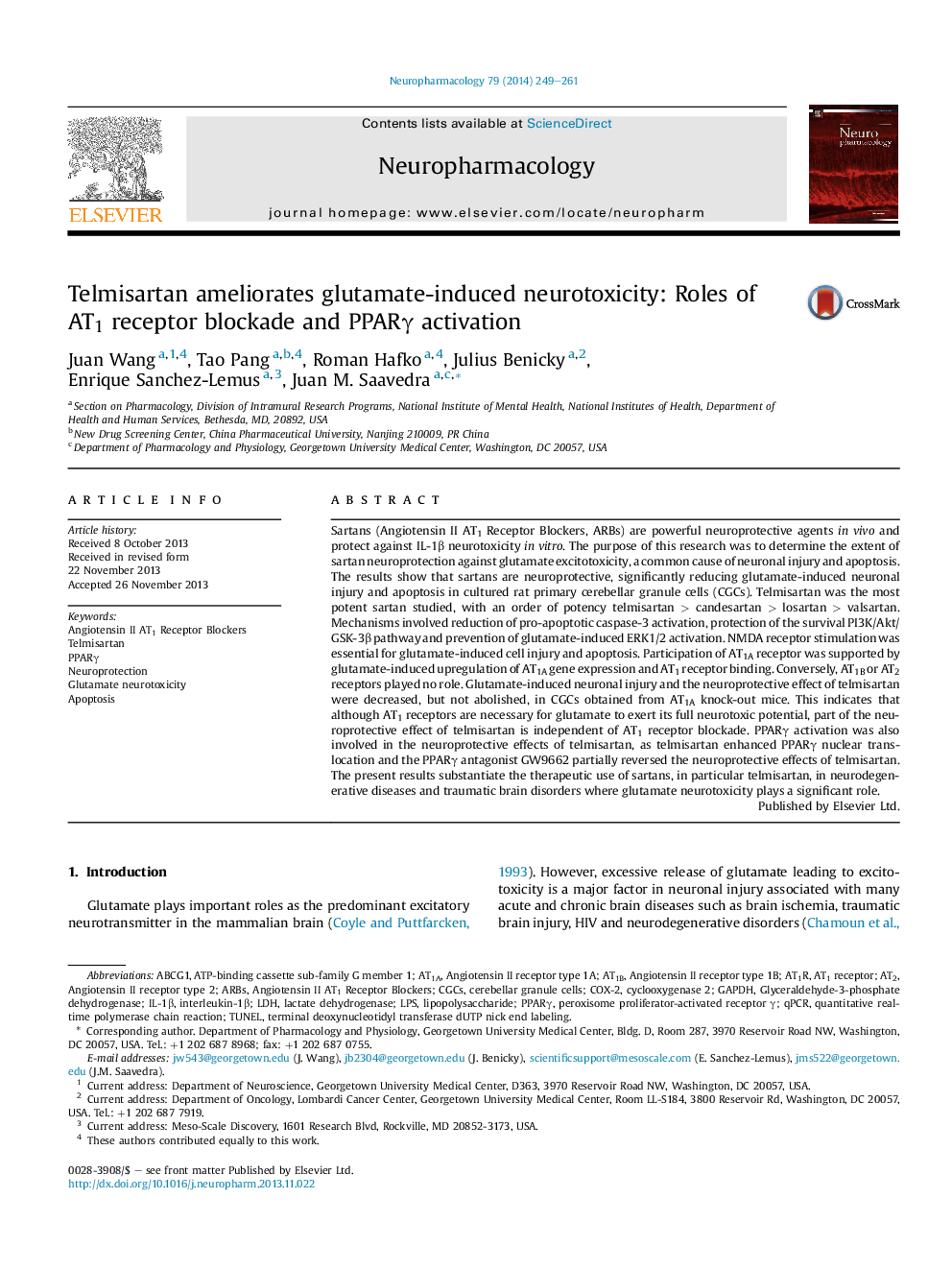| کد مقاله | کد نشریه | سال انتشار | مقاله انگلیسی | نسخه تمام متن |
|---|---|---|---|---|
| 5814596 | 1556635 | 2014 | 13 صفحه PDF | دانلود رایگان |

- Sartans (ARBs) protect against glutamate toxicity in cultured primary neurons.
- Telmisartan is the most potent neuroprotective sartan.
- Telmisartan neuroprotection involves the PI3K/Akt/GSK-3β and ERK1/2 pathways.
- Glutamate neurotoxicity partially depends on Angiotensin AT1A receptor activation.
- Telmisartan neuroprotection results from AT1 receptor blockade and PPARγ activation.
Sartans (Angiotensin II AT1 Receptor Blockers, ARBs) are powerful neuroprotective agents in vivo and protect against IL-1β neurotoxicity in vitro. The purpose of this research was to determine the extent of sartan neuroprotection against glutamate excitotoxicity, a common cause of neuronal injury and apoptosis. The results show that sartans are neuroprotective, significantly reducing glutamate-induced neuronal injury and apoptosis in cultured rat primary cerebellar granule cells (CGCs). Telmisartan was the most potent sartan studied, with an order of potency telmisartan > candesartan > losartan > valsartan. Mechanisms involved reduction of pro-apoptotic caspase-3 activation, protection of the survival PI3K/Akt/GSK-3β pathway and prevention of glutamate-induced ERK1/2 activation. NMDA receptor stimulation was essential for glutamate-induced cell injury and apoptosis. Participation of AT1A receptor was supported by glutamate-induced upregulation of AT1A gene expression and AT1 receptor binding. Conversely, AT1B or AT2 receptors played no role. Glutamate-induced neuronal injury and the neuroprotective effect of telmisartan were decreased, but not abolished, in CGCs obtained from AT1A knock-out mice. This indicates that although AT1 receptors are necessary for glutamate to exert its full neurotoxic potential, part of the neuroprotective effect of telmisartan is independent of AT1 receptor blockade. PPARγ activation was also involved in the neuroprotective effects of telmisartan, as telmisartan enhanced PPARγ nuclear translocation and the PPARγ antagonist GW9662 partially reversed the neuroprotective effects of telmisartan. The present results substantiate the therapeutic use of sartans, in particular telmisartan, in neurodegenerative diseases and traumatic brain disorders where glutamate neurotoxicity plays a significant role.
Journal: Neuropharmacology - Volume 79, April 2014, Pages 249-261